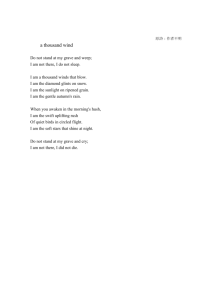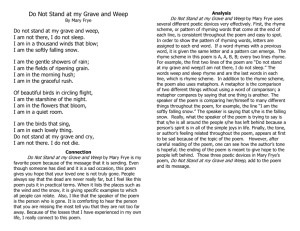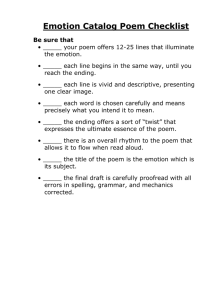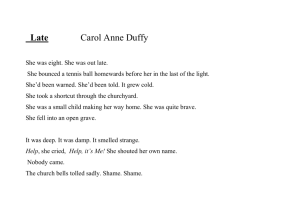Do Not Stand at My Grave and Weep by Mary Frye
advertisement
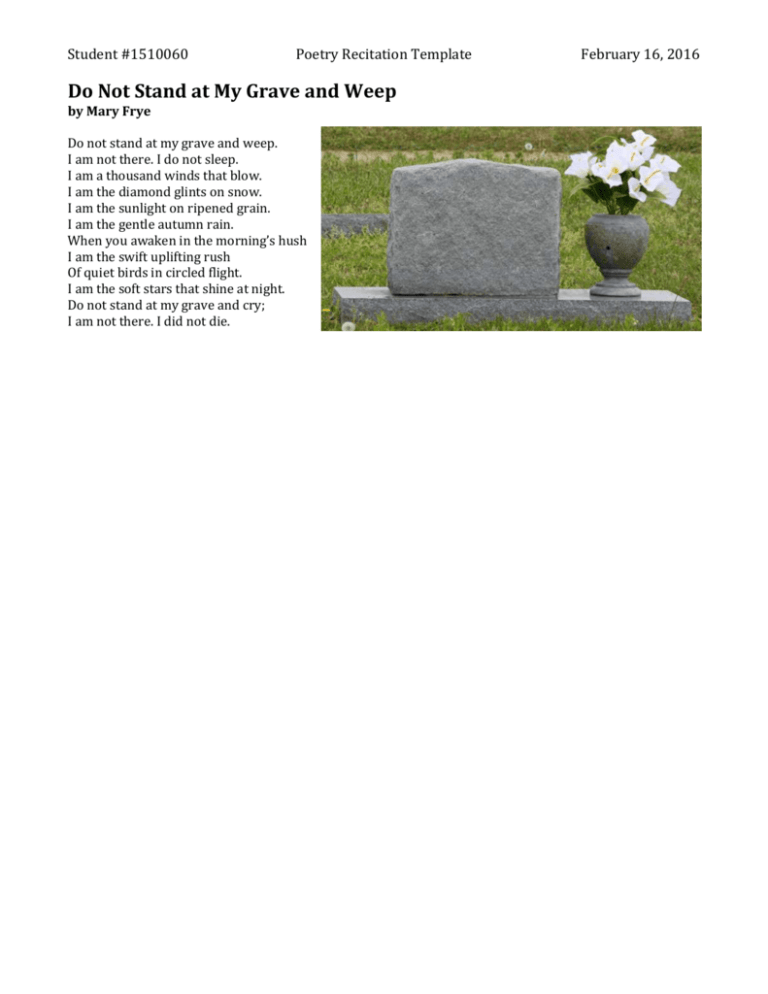
Student #1510060 Poetry Recitation Template Do Not Stand at My Grave and Weep by Mary Frye Do not stand at my grave and weep. I am not there. I do not sleep. I am a thousand winds that blow. I am the diamond glints on snow. I am the sunlight on ripened grain. I am the gentle autumn rain. When you awaken in the morning’s hush I am the swift uplifting rush Of quiet birds in circled flight. I am the soft stars that shine at night. Do not stand at my grave and cry; I am not there. I did not die. February 16, 2016 Student #1510060 5 10 Poetry Recitation Template Do Not Stand at My Grave and Weep by Mary Frye Do not stand at my grave and weep. I am not there. I do not sleep. I am a thousand winds that blow. I am the diamond glints on snow. I am the sunlight on ripened grain. I am the gentle autumn rain. When you awaken in the morning’s hush I am the swift uplifting rush Of quiet birds in circled flight. I am the soft stars that shine at night. Do not stand at my grave and cry; I am not there. I did not die. February 16, 2016 Alliteration Antithesis Rhyme Refrain Imagery Metaphor Rhyme scheme (a) (a) (b) (b) (c) (c) (d) (d) (e) (e) (f) (f) Relived in Grief It is said that Mary Frye’s lyric poem “Do Not Stand at My Grave and Weep” was written for a German Jewish girl whose mother deceased. Yet, because of the ever-growing anti-Semitism feelings, the girl was warned to stay from Germany. As a result, she could not visit her mother’s tomb. Rather than directly advising the girl not to go home, Frye used a beautiful and fairy-tale-like poem to persuade her to stay. In her poem, the narrator speaks in the girl’s mother’s tone and depicted herself as many marvelous natural sceneries. (3-6, 8-9) It certainly provided more reasons for the girl to linger at where she was and enjoy the beauties of nature right then instead of risking her life to home. Two sets of refrains are made in order to emphasize that the mother was not in the tomb, but everywhere else. The poem as a whole established a deceptive illusion that was both effective and easy for a girl to understand. Thereafter, this poem started to be widely read in funeral obituaries. The immortality of the poem was contributed by the poet’s pure and genuine intent and the soothing imageries illustrated throughout the poem. After the reading, it is likely that people are relieved in grief.
